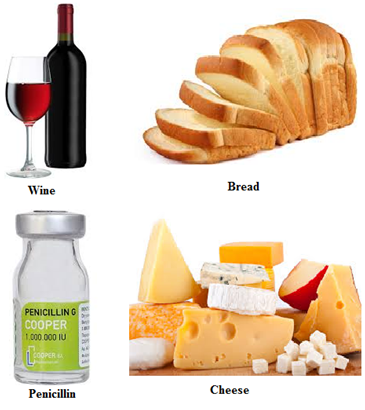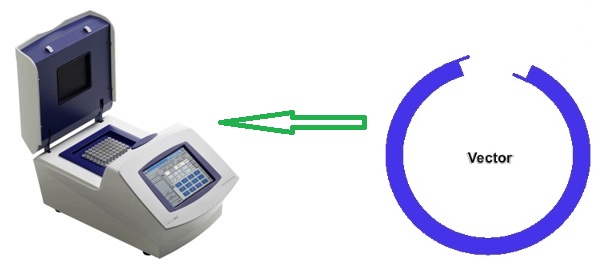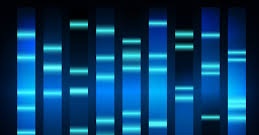Fungi represent a vast and diverse kingdom of eukaryotic organisms that play indispensable roles in ecological systems, agriculture, industry, medicine, and scientific research. Their unique biological features and metabolic capabilities render them essential to life on Earth, as well as invaluable resources for human society. This review elaborates on the multifaceted significance of fungi by exploring their ecological functions, industrial applications, symbiotic relationships, role in plant and human health, contributions to biotechnology and pharmaceuticals, and their fundamental importance in biological research.
1. Ecological Role of Fungi: Saprophytes and Nutrient Recycling
One of the most fundamental roles of fungi in nature is their function as saprophytes—organisms that decompose dead organic matter. Unlike plants, fungi are heterotrophic, meaning they cannot produce their own food via photosynthesis; instead, they acquire nutrients by breaking down complex organic materials from dead plants, animals, and other organic wastes in the environment. This decomposition process is critical for the recycling of nutrients such as carbon, nitrogen, phosphorus, and other minerals that are essential for sustaining life.
Fungi secrete a diverse array of extracellular enzymes capable of degrading complex polymers like cellulose, hemicellulose, and lignin—components of plant cell walls that are otherwise resistant to degradation. Lignin, in particular, is a highly complex and recalcitrant polymer that poses a significant challenge to most decomposers, but certain fungi, especially white-rot fungi, have evolved specialized enzymatic machinery (such as lignin peroxidases and manganese peroxidases) that enable them to efficiently break down lignin. This unique ability positions fungi as key players in the carbon cycle, facilitating the conversion of dead plant material into simpler compounds that can be reused by plants and microorganisms.
Through decomposition, fungi release nutrients back into the soil, enhancing soil fertility and promoting plant growth. This nutrient recycling is essential for maintaining the productivity and sustainability of terrestrial ecosystems. Without fungi, the accumulation of undecomposed organic matter would disrupt nutrient availability and soil structure, thereby impairing ecosystem function.
2. Industrial Applications of Fungi
Fungi have been utilized by humans for thousands of years in various industrial processes, especially in food production and fermentation technologies. The most famous example is Saccharomyces cerevisiae, commonly known as baker’s yeast, which has been instrumental in baking and brewing industries.
2.1 Fermentation Processes
Fermentation is a metabolic process whereby fungi (and other microorganisms) convert carbohydrates, such as sugars, into alcohols or organic acids under anaerobic conditions. This process underpins the production of many food and beverage products (Figure 1):
- Bread Production: Saccharomyces cerevisiae ferments sugars in dough, producing carbon dioxide gas that causes the dough to rise, resulting in the light and fluffy texture of bread.
- Alcoholic Beverages: Yeasts ferment sugars derived from grains, fruits, or other sources to produce ethanol and carbon dioxide. This is the basis for the production of beer, wine, and spirits. Different strains of fungi contribute distinct flavors and aromas to these beverages, shaping regional and cultural preferences.
- Organic Acid Production: Certain fungi produce organic acids like citric acid, lactic acid, and gluconic acid, which have widespread applications in food preservation, pharmaceuticals, and chemical industries. Aspergillus niger, for example, is industrially exploited for citric acid production at a large scale.

2.2 Enzyme Production
Fungi secrete a variety of enzymes with applications in biotechnology and industry. These include cellulases, proteases, amylases, and lipases used in food processing, detergents, textiles, paper, and biofuel industries. The ability of fungi to produce enzymes cost-effectively and at scale makes them preferred organisms for industrial enzyme production.
3. Edible Fungi and Food Security
Several fungi are directly consumed as food, most notably mushrooms. Edible mushrooms such as Agaricus bisporus (the common button mushroom), Pleurotus ostreatus (oyster mushroom), and Lentinula edodes (shiitake mushroom) are rich sources of proteins, vitamins, minerals, and bioactive compounds that contribute to human nutrition and health.
However, caution is warranted as not all mushrooms are safe to eat. Many wild mushrooms are toxic or even deadly if ingested, such as species in the genus Amanita, which contain potent toxins like amatoxins. Hence, mushroom foraging requires expert knowledge to avoid accidental poisoning.
Beyond direct consumption, edible fungi contribute to food security by providing alternative sources of protein and nutrients, especially in regions where animal protein is scarce or expensive.
4. Symbiotic Relationships and Mutualisms
Fungi engage in numerous symbiotic relationships, which are vital for ecosystem functioning and biodiversity.
4.1 Lichens
Lichens are composite organisms formed by a symbiotic association between fungi (usually ascomycetes) and photosynthetic partners such as green algae or cyanobacteria. The fungal partner provides structural support and protection, while the photosynthetic partner supplies carbohydrates through photosynthesis. Lichens are important pioneers in harsh environments, capable of colonizing bare rocks and soil surfaces where few other organisms can survive. They contribute to soil formation, nutrient cycling, and provide food and habitat for various animals.
4.2 Mycorrhizae
Mycorrhizal associations between fungi and plant roots represent one of the most widespread and ecologically significant symbioses on Earth. In this mutualistic relationship, the fungal hyphae colonize the root system of plants, extending far into the soil and increasing the root’s absorptive surface area. This enhances the plant’s ability to absorb water, phosphorus, nitrogen, and other minerals, especially in nutrient-poor soils.
In return, the fungus receives carbohydrates and other organic nutrients produced by the plant through photosynthesis. This mutual exchange is critical for plant growth, health, and productivity. Mycorrhizae also improve soil structure, reduce soil erosion, and increase plant resistance to pathogens and environmental stresses such as drought and heavy metals.
4.3 Endophytes
Endophytic fungi live within plant tissues without causing immediate harm. These fungi can confer various benefits, including increased resistance to pathogens, enhanced tolerance to environmental stresses, and improved nutrient acquisition. However, some endophytes can also become parasitic under certain conditions. The complexity of endophytic relationships is an active area of research with potential applications in agriculture, such as biological control and sustainable crop management.
5. Fungi as Pathogens: Impact on Plants, Animals, and Humans
While fungi contribute positively to ecosystems and human society, many species are pathogenic, causing diseases that have significant economic and health impacts.
5.1 Plant Pathogens
Fungal phytopathogens are among the most devastating agents of crop diseases worldwide. Diseases such as rusts, smuts, mildews, blights, and wilts caused by fungi can severely reduce crop yields and quality, leading to food insecurity and economic losses.
Examples include:
- Puccinia spp. causing rust diseases on wheat and other cereals.
- Magnaporthe oryzae, the causal agent of rice blast disease.
- Fusarium species causing vascular wilts and root rots.
The management of fungal plant diseases often involves fungicides, resistant crop varieties, and cultural practices, but these approaches can have environmental and economic drawbacks, emphasizing the need for integrated and sustainable disease control strategies.
5.2 Human and Animal Pathogens
Several fungi are opportunistic pathogens in humans and animals. Some species, such as Candida albicans, are part of the normal human microbiota but can cause infections if the host’s immune system is compromised or the balance of microbial flora is disturbed (e.g., after antibiotic treatment). These infections range from superficial mucosal infections like oral thrush and vaginal candidiasis to systemic and life-threatening diseases in immunocompromised individuals.
Other important human fungal pathogens include Aspergillus fumigatus (causing aspergillosis), Cryptococcus neoformans (causing cryptococcosis), and dermatophytes that cause skin infections such as athlete’s foot.
Fungal diseases in animals, particularly livestock, can also lead to significant economic losses.
6. Fungi in Medicine and Pharmaceuticals
Fungi have been a prolific source of bioactive compounds that revolutionized medicine. The discovery of penicillin from the mold Penicillium notatum by Alexander Fleming marked the beginning of the antibiotic era and saved millions of lives worldwide. Since then, fungi have yielded a wide range of antibiotics, antifungals, immunosuppressants, and other pharmaceuticals.
6.1 Antibiotics
Besides penicillin, other notable fungal-derived antibiotics include:
- Griseofulvin: An antifungal used to treat dermatophytic infections of the skin and nails.
- Cephalosporins: Initially derived from fungi of the genus Acremonium (formerly Cephalosporium), these antibiotics are widely used in clinical medicine.
- Echinocandins: A newer class of antifungals derived from fungal metabolites used to treat invasive fungal infections.
6.2 Other Bioactive Compounds
Fungi also produce immunosuppressants such as cyclosporine, which is essential in organ transplantation to prevent rejection. Statins, cholesterol-lowering drugs, were originally isolated from fungi like Aspergillus terreus.
Moreover, secondary metabolites produced by fungi in symbiotic relationships (e.g., lichens) and endophytes are promising sources for novel drugs with antimicrobial, anticancer, antiviral, and anti-inflammatory properties.
7. Fungi as Model Organisms in Biological Research
Fungi have been extensively used as model organisms to study fundamental biological processes due to their relatively simple genetics, rapid growth, and ease of laboratory cultivation.
7.1 Metabolic and Genetic Studies
Species like Neurospora crassa and Saccharomyces cerevisiae have provided profound insights into eukaryotic genetics, molecular biology, cell cycle regulation, and metabolic pathways.
- Neurospora was central to the one-gene-one-enzyme hypothesis proposed by Beadle and Tatum, which established the link between genes and metabolic enzymes.
- Saccharomyces cerevisiae has been pivotal in understanding DNA replication, repair, recombination, and the regulation of gene expression.
These fungi continue to serve as valuable tools in genetic engineering, synthetic biology, and systems biology.
8. Fungi and Environmental Biotechnology
Fungi have applications in bioremediation, the process of using biological agents to detoxify polluted environments. Their ability to degrade complex pollutants such as pesticides, petroleum hydrocarbons, heavy metals, and dyes makes them invaluable in cleaning contaminated soils and water.
Fungal enzymes can break down toxic substances that are otherwise persistent in the environment, contributing to ecosystem restoration and pollution control.
9. Fungal Nutrition and Metabolism
Fungi are generally chemoheterotrophs; they do not photosynthesize but obtain energy by absorbing nutrients from organic compounds in their environment. Their absorptive mode of nutrition involves secreting enzymes that externally digest organic matter, which is then absorbed as simpler molecules.
Fungi store energy predominantly as lipids and glycogen, unlike plants that store starch. Their metabolic versatility allows them to thrive in diverse environments, from soil and decaying wood to aquatic habitats and even extreme conditions.
10. Summary
In conclusion, fungi are vital to life on Earth through their roles as decomposers, nutrient recyclers, symbionts, pathogens, industrial workhorses, and sources of pharmaceuticals. Their ecological functions maintain ecosystem balance and soil health. Industrially, fungi enable the production of essential foods, beverages, enzymes, and organic acids. Medically, they are a treasure trove of antibiotics and bioactive compounds. Their utility as model organisms continues to advance biological science. Understanding and harnessing fungal biology hold great promise for sustainable agriculture, environmental protection, human health, and biotechnological innovation.
References
Anaissie E.J, McGinnis M.R, Pfaller M.A (2009). Clinical Mycology. 2nd ed. Philadelphia, PA: Churchill Livingstone Elsevier. London.
Beck R.W (2000). A chronology of microbiology in historical context. Washington, D.C.: ASM Press.
Black, J.G. (2008). Microbiology: Principles and Explorations (7th ed.). Hoboken, NJ: J. Wiley & Sons.
Brooks G.F., Butel J.S and Morse S.A (2004). Medical Microbiology, 23rd edition. McGraw Hill Publishers. USA.
Brown G.D and Netea M.G (2007). Immunology of Fungal Infections. Springer Publishers, Netherlands.
Calderone R.A and Cihlar R.L (eds). Fungal Pathogenesis: Principles and Clinical Applications. New York: Marcel Dekker; 2002.
Chakrabarti A and Slavin M.A (2011). Endemic fungal infection in the Asia-Pacific region. Med Mycol, 9:337-344.
Champoux J.J, Neidhardt F.C, Drew W.L and Plorde J.J (2004). Sherris Medical Microbiology: An Introduction to Infectious Diseases. 4th edition. McGraw Hill Companies Inc, USA.
Chemotherapy of microbial diseases. In: Chabner B.A, Brunton L.L, Knollman B.C, eds. Goodman and Gilman’s The Pharmacological Basis of Therapeutics. 12th ed. New York, McGraw-Hill; 2011.
Chung K.T, Stevens Jr., S.E and Ferris D.H (1995). A chronology of events and pioneers of microbiology. SIM News, 45(1):3–13.
Discover more from Microbiology Class
Subscribe to get the latest posts sent to your email.




